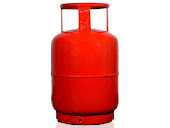Indian Oil Corp tops Fortune India 500 list; RIL at second spotPress Trust of India, 13 Dec 2011 | 12:04 AM (from NDTV Profit news)
This year's list of the country's 500 largest corporations, compiled by the global business magazine Fortune's Indian edition, features as many as 57 new entities. State-run Indian Oil Corp has emerged as the country's biggest company in terms of annual revenue, followed by Mukesh Ambani-led private sector giant Reliance Industries at the second place, as per an annual list of Fortune 500 companies in India.
This year's list of the country's 500 largest corporations, compiled by the global business magazine Fortune's Indian edition, features as many as 57 new entities. All the 500 firms together recorded a collective turnover of Rs 45,79,911.38 crore in the latest financial year. Indian Oil Corp (IOC) was the biggest with annual revenue of Rs 3,23,113.12 crore, followed by Reliance Industries (RIL) with a full-year revenue of Rs 2,72,923.36 crore. Both IOC and RIL have retained their top-two ranks from the previous year, Fortune India said.
In this year's list, the two are followed by Bharat Petroleum (Rs 1,56,580.12 crore) at the third and State Bank of India (Rs 1,47,843.92 crore) at the fourth place. Other entities in the list are Hindustan Petroleum (5th rank), Tata Motors (6th), Oil & Natural Gas Corp (7th), Tata Steel (8th), Hindalco Industries (9th) and Coal India (10th).There are as many as six state-run companies in the top-ten positions, as against four from the private sector. The magazine said that the total sales of the country's 500 top corporations have grown by 21.5 per cent from the last year, while their median growth has been even higher at about 25 per cent.
"The good news, however, is that many of the Fortune India 500 companies are now beginning to shape the world's opinion of India for the better. And they may just be doing a better job than their Chinese counterparts," it added.
Read More...




